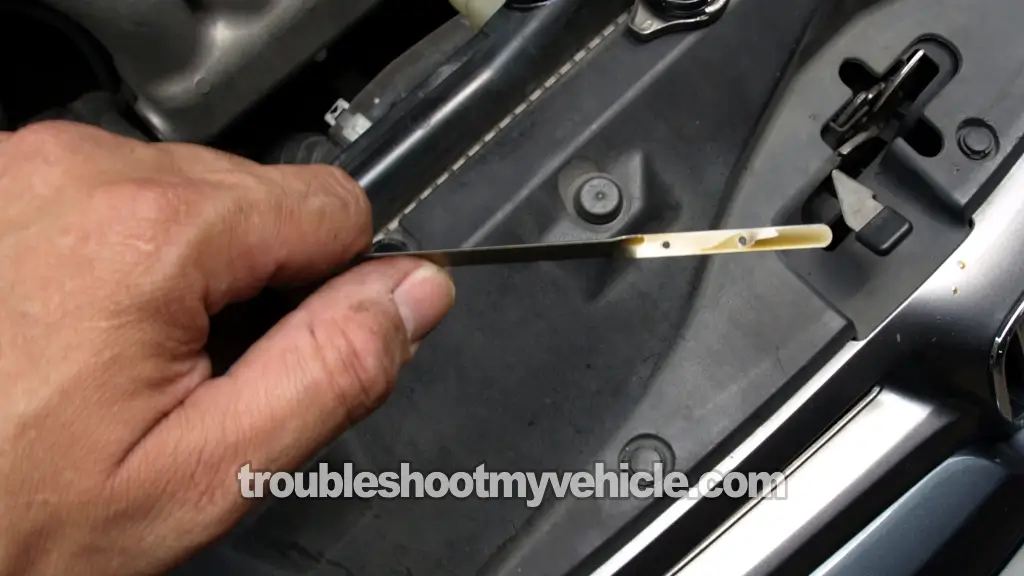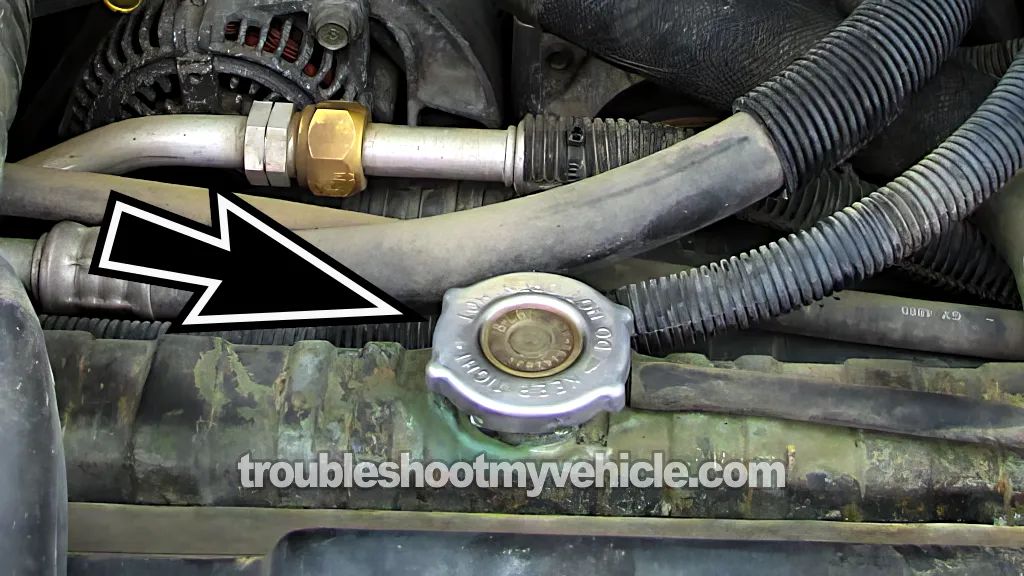
There are 4 ways to check if a head gasket's blown. You can do 2 of them without using any tools.
In this tutorial, I'm gonna show you how to do all 4 tests. So if you suspect you've got a blown head gasket on your hands, your results will help you confirm whether there's a head gasket issue or not.
Contents of this tutorial:
APPLIES TO: This tutorial applies to the following vehicles:
- 3.9L V6 Dodge Ram B150 Van: 1989, 1990, 1991, 1992, 1993, 1994.
- 3.9L V6 Dodge Ram B250 Van: 1989, 1990, 1991, 1992, 1993, 1994.
- 3.9L V6 Dodge Ram B1500 Van: 1995, 1996, 1997, 1998, 1999, 2000, 2001, 2002, 2003.
- 3.9L V6 Dodge Ram B2500 Van: 1995, 1996, 1997, 1998, 1999, 2000, 2001, 2002, 2003.
Symptoms Of A Blown Head Gasket
A blown head gasket usually happens because the engine overheated. The most common causes are:
- Fan clutch failure: The fan clutch is worn out and can't pull enough air across the radiator to cool the engine like it should.
- Coolant loss: The engine ran without coolant due to a leak somewhere in the cooling system.
- Thermostat failure: The thermostat got stuck closed. Since it stayed closed, the hot coolant couldn't circulate between the radiator and the engine to cool things down.
When one or both head gaskets fail, you'll usually see:
- Overheating: The temp gauge hits the max, the warning light comes on, and you might see steam coming from under the hood.
- Coolant mixing with oil: You'll spot a milky goop in the oil or radiator — that's a solid giveaway of a head gasket failure.
- White smoke from the exhaust: Coolant is leaking into the cylinders and burning along with the fuel.
- Engine turns over but won't start: The head gasket failure causes a loss of compression in several side-by-side cylinders, which keeps the engine from starting.
- No compression in two neighboring cylinders: A sure sign the head gasket's blown between them.
- Coolant gets pushed into the reservoir: You'll see bubbles in the overflow tank while idling or right after shutting the engine off.
- Coolant keeps disappearing with no visible leak: You keep having to add coolant because the level drops, but you don't see any puddles.
- Engine performance issues: The engine runs rough at idle or misfires. You'll also notice a big drop in power from compression loss.
Depending on how bad the damage is (whether it's one or both head gaskets) you might not see all these symptoms at once. But if any of them sound familiar, it's a good idea to run one or more of the head gasket tests I'm about to show you, so you can be sure what's going on.
TEST 1: Oil The Color Of Coffee With Too Much Creamer

Most of the time, when one or both head gaskets fail in your Dodge Ram van, the engine oil ends up mixing with coolant.
So for the first test, we're gonna take a look at the oil on the dipstick. Specifically, we'll be checking its color and texture.
If the oil looks like coffee with way too much creamer, that's a big red flag. It means one or both head gaskets on your 3.9L V6 Dodge Ram van are shot.
Here's what you need to do:
- 1
Pop the hood open.
- 2
Pull out the dipstick from the engine.
- 3
Look at the oil's color and thickness.
- 4
You'll see one of two things:
1.) The oil looks off-white and creamy.
2.) The oil looks normal —both in color and viscosity.
Now let's figure out what your result means:
CASE 1: The oil looks like coffee with too much creamer. That's a clear sign that one or both head gaskets have failed.
CASE 2: The oil looks normal. That's what you wanna see. Everything's good so far.
Next, we'll check if any exhaust or compression gases are making their way into the cooling system. Head over to: TEST 2: Exhaust Gases Shooting Out Of The Radiator.
TEST 2: Exhaust Gases Shooting Out Of The Radiator

For this test, you're gonna crank the engine while the radiator cap's off.
If coolant shoots out of the radiator while the engine's cranking, that means one or both head gaskets are blown.
CAUTION: Never take off the radiator cap when the engine's hot! If your Dodge van's been running, wait until it cools all the way down before removing that cap.
Here's how to do it:
- 1
Take off the radiator cap.
If the radiator's coolant level is low, go ahead and top it off with water. - 2
Ask a helper to crank the engine while you stand back from the open radiator.
- 3
You'll get one of these two results:
1.) Coolant or water will shoot up and out of the radiator.
2.) The coolant remains undisturbed. Cranking the engine doesn't affect it.
Alright, now that the test's done, here's what your results mean:
CASE 1: Coolant shot out or bubbled up from the radiator. That confirms you've got a blown head gasket. Combustion gases are leaking into the cooling system. No need to do more tests.
CASE 2: Coolant didn't bubble or shoot out. That's the result you want. Up to this point, everything's looking normal.
If your 3.9L V6 Dodge van runs but misfires or idles really rough, go to: TEST 3: Cylinder Compression Test.
If your van starts overheating within minutes of starting it for no clear reason, go to: TEST 4: Using A Chemical Block Tester (Combustion Leak Tester).
